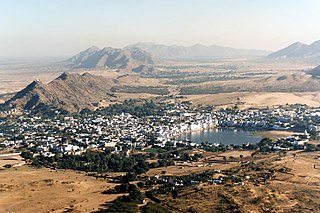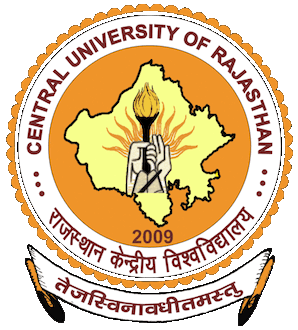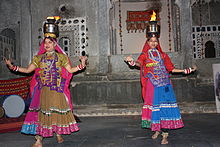
Ajmerpronounced [ədʒmeːr](listen) is one of the major and oldest cities in the Indian state of Rajasthan and the centre of the eponymous Ajmer District. It is located at the centre of Rajasthan. It is also known as heart of Rajasthan. The city was established as "Ajayameru" by a Chahamana ruler, either Ajayaraja I or Ajayaraja II, and served as their capital until the 12th century CE.

Rajasthan is a state in northern India. It covers 342,239 square kilometres (132,139 sq mi) or 10.4 per cent of India's total geographical area. It is the largest Indian state by area and the seventh largest by population. It is on India's northwestern side, where it comprises most of the wide and inhospitable Thar Desert and shares a border with the Pakistani provinces of Punjab to the northwest and Sindh to the west, along the Sutlej-Indus River valley. It is bordered by five other Indian states: Punjab to the north; Haryana and Uttar Pradesh to the northeast; Madhya Pradesh to the southeast; and Gujarat to the southwest. Its geographical location is 23.3 to 30.12 North latitude and 69.30 to 78.17 East longitude, with the Tropic of Cancer passing through its southernmost tip.

The Pushkar Fair, also called the Pushkar Camel Fair or locally as Kartik Mela or Pushkar ka Mela is an annual multi-day livestock fair and cultural fête held in the town of Pushkar near Ajmer city in Ajmer district in. The fair starts with the Hindu calendar month of Kartik and ends on the Kartik Purnima, which typically overlaps with late October and early November in the Gregorian calendar. In 1998, over 1 million visitors came to Pushkar throughout the year. The Pushkar fair alone attracts over 200,000 visitors.

Pushkar is a city, near Ajmer City and headquarters of Pushkar tehsil in the Ajmer district in the Indian state of Rajasthan. It is situated about 10 km (6.2 mi) northwest of Ajmer and about 150 kilometres (93 mi) southwest of Jaipur. It is a pilgrimage site for Hindus and Sikhs. Pushkar has many temples. Most of the temples and ghats in Pushkar are from the 18th century and later, because many temples were destroyed during Muslim conquests in the area. Subsequently, the destroyed temples were rebuilt. The most famous among Pushkar temples is the red spired Brahma Temple. It is considered a sacred city by the Hindus particularly in Shaktism, and meat and eggs consumption are forbidden in the city. Pushkar is located on the shore of Pushkar Lake, which has many ghats where pilgrims bathe. Pushkar is also significant for its Gurdwaras for Guru Nanak and Guru Gobind Singh. One of the bathing ghats is called Gobind ghat built by the Sikhs in the memory of Guru Gobind Singh.

Bhilwara is a City, administrative headquarters in Bhilwara district of the Mewar region of Rajasthan, India. It has been termed as 'Textile city'.
Kishangarh is a city and a Municipal Council in Ajmer district in the Indian state of Rajasthan.

Ajmer District is a district of the state of Rajasthan in North western India. The city of Ajmer is the district headquarters.

Gangaur is a Hindu festival celebrated in the Indian states of Rajasthan, Haryana, Malwa, Nimaad regions of Madhya Pradesh, Braj and Bundelkhand regions in Uttar Pradesh and Madhya Pradesh. It is also celebrated in some parts of Gujarat and West Bengal. A variation of same festival known as "Chaitra Gauri Vrat" is observed on the same day in the states of Maharashtra & North Karnataka. Another variation called 'Saubhagya Gauri Vratam' is observed in the states of Telangana and Andhra Pradesh.

Teej is a Hindu festival celebrated mainly by women, and marks the beginning of monsoon season in Nepal. "Teej" is a generic name referring to the three types of Teej festivals - Hartalika, Haryali and Kajari. It is primarily dedicated to Parvati and her reunion with Lord Shiva. Haryali Teej and Hartalika Teej welcome the monsoon season and are celebrated primarily by girls and women, with singing, dancing, enjoyment and prayer rituals. Women often fast in celebration of Teej.
Gulabpura is a town in Bhilwara district of Rajasthan. Mainly industrial town with good educational institutes.
Bijainagar is a city and headquarters of Bijainagar tehsil in the Ajmer district of the Indian state of Rajasthan.It was founded by Shri Rao Saheb Vijay Singh ji Of Masuda in 1919 CE,This city is situated along the Khari River close to the southern border of Ajmer District.

Brahma Temple, Pushkar is a Hindu temple situated at Pushkar in the Indian state of Rajasthan, close to the sacred Pushkar Lake to which its legend has an indelible link.

Central University of Rajasthan (CURAJ) is a central university located in Ajmer, Rajasthan, India. CURAJ has 12 schools, 32 academic departments and one community college covering technology, science, humanities, commerce, management, public policy and social science programs with a strong emphasis on scientific, technological and social education as well as research. Total student enrollment at the university exceeds 3000 and includes students from over 23 states.

Nareli Jain Temple or Shri Gyanodaya Tirth Kshetra, is a new Jain temple located on the outskirts of Ajmer 7 kilometers from the city center and 128 kilometers west of Jaipur on the main national highway 8.
Kishangarh Airport is a domestic airport serving the twin cities of Ajmer and Kishangarh. It is located at Kishangarh on National Highway 8, 27 km (17 mi) north-east of Ajmer. The airport was inaugurated on 11 October 2017. It is operated by the Airports Authority of India (AAI), covers an area of 742 acres and has a 2,000 metre long runway. It is also famous for its interior Bani Thani painting. The airport facilitates transport to the pilgrim sites like the Dargah of Khwaja Garib Nawaz, Pushkar and the fort of Prithvi Raj Chauhan in Ajmer.
Chang dance is a folk dance from Rajasthan, India. It is also referred to Dhamal, dhuff dance,, and as Holi dance as it is performed during the Hindu festival of the same name (Holi) to celebrate the defeat of evil. It is a group dance performed by men, carousing and singing riotously to the rhythmic beat of the chang instrument.
Govardhan Kumari, is the only lady from the Royal Family known for her efforts to revive and promote the authentic style of Ghoomar, a folk dance form of Rajasthan.
Bhagirath Choudhary is an Indian politician from Rajasthan. A member of the Bharatiya Janata Party, he respresents Ajmer in the Lok Sabha. From 2013 to 2018, he represented Kishangarh in Ajmer district in the Rajasthan Legislative Assembly. As Member of Legislative Assembly, he was Chairman of the Committee on Environment in 2015-16 and 2016-17.
Aradka is a village in Ajmer tehsil of Ajmer district of Rajasthan state in India. The village falls under Aradka gram panchayat.













